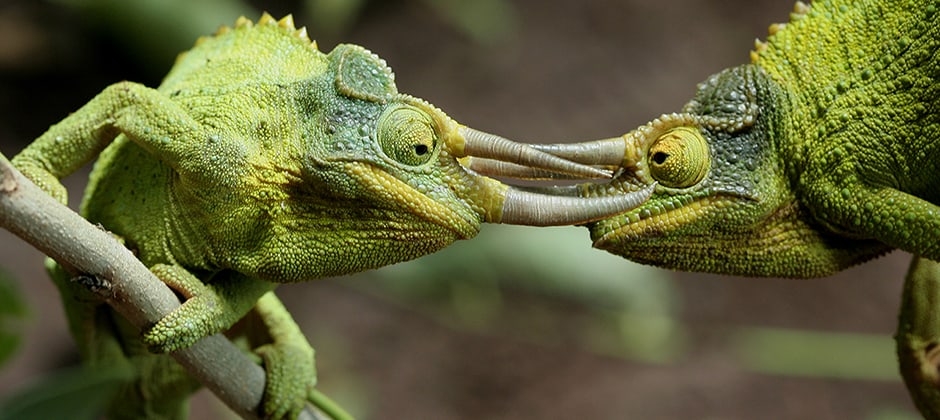Share this article
Without predators, introduced chameleons get brighter
A lack of predators brings out the color in chameleons introduced to Hawaii. Jackson’s chameleons (Trioceros jacksonii) were introduced to Oahu in the 1970s after being released by a pet store owner. Males of the species are sometimes green, turning bright yellow when faced with rivals or predators. In their native range in East Africa, the species are often meals for predators like birds or snakes. But they lack natural predators in Hawaii. Researchers in a study published recently in Science Advances believe the lack of competition has allowed males to get brighter in an effort to attract females without having to worry about undue attention from predators. “We’ve seen that in guppies, for example, and there are various birds and fishes where being brightly colored has a reproductive advantage,” Martin Whiting, a researcher at Macquarie University’s School of Natural Sciences, told Cosmos.
Header Image: Rival male Jackson’s chameleons fight in Kenya. Males will lock their horns if color signaling fails to resolve a contest. Credit: Devi Stuart Fox








